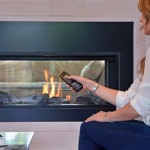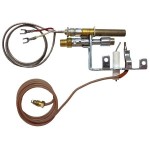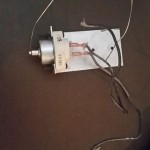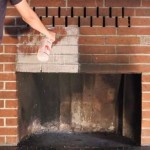Fireplace in Corner: Maximizing Space and Ambiance
A fireplace strategically placed in a corner of a room represents a design choice that balances functionality, aesthetics, and efficient space utilization. Corner fireplaces, unlike traditional wall-mounted fireplaces, offer a unique focal point while minimizing the encroachment on valuable floor space, making them a popular option for both smaller and larger homes. This article explores the various benefits, design considerations, installation factors, and maintenance aspects associated with incorporating a corner fireplace into a residential setting.
The concept of a corner fireplace leverages the often underutilized space within a room. By positioning the fireplace at the intersection of two walls, the designer can create a centralized feature that draws the eye and serves as a natural gathering point. This arrangement can be particularly advantageous in rooms where wall space is limited due to windows, doorways, or pre-existing architectural features. The angular design of the fireplace itself can also add visual interest, softening the sharp angles of the corner and creating a more inviting and comfortable atmosphere.
Space Optimization and Design Flexibility
One of the primary advantages of a corner fireplace is its ability to optimize room layout. In smaller homes or apartments, every square foot counts. A traditional fireplace, centered on a wall, can consume a significant amount of prime real estate, restricting furniture placement and overall flow. A corner fireplace, however, tucks neatly into the periphery, freeing up wall space for seating, storage, or decorative elements. This spatial efficiency allows for more flexible furniture arrangements and a less cluttered living environment.
Beyond spatial optimization, corner fireplaces offer considerable design flexibility. They can be incorporated into a wide range of architectural styles, from rustic and traditional to modern and minimalist. The surrounding mantel and hearth can be customized using various materials, such as brick, stone, wood, or tile, to complement the existing décor and reflect the homeowner's personal taste. Moreover, the angled configuration of a corner fireplace can lend itself to unique design features, such as built-in shelving or custom cabinetry, further enhancing its functionality and aesthetic appeal.
The visual impact of a corner fireplace can be significant. The angled placement naturally draws the eye, creating a focal point that is both inviting and visually dynamic. This strategic positioning can help to balance the room's overall design, distributing visual weight and preventing the space from feeling lopsided or unbalanced. In open-concept living areas, a corner fireplace can also serve as a subtle room divider, delineating distinct zones without completely obstructing the flow of space and light. Furthermore, the placement of seating around a corner fireplace naturally encourages conversation and interaction, fostering a sense of warmth and connection.
The choice of fuel source for a corner fireplace is another important consideration. Traditional wood-burning fireplaces offer the classic ambiance of crackling flames and the scent of burning wood, but they also require careful maintenance and adherence to safety regulations. Gas fireplaces, on the other hand, provide the convenience of instant on/off operation and precise temperature control. Electric fireplaces offer the simplest installation and operation, requiring only a standard electrical outlet, and are often equipped with realistic flame effects and adjustable heat settings. The selection of fuel source will depend on individual preferences, lifestyle considerations, and local building codes.
Installation Considerations and Venting Options
The installation of a corner fireplace requires careful planning and adherence to building codes. Unlike freestanding fireplaces, corner fireplaces often necessitate modifications to the existing wall structure, particularly if a chimney or venting system is involved. It is crucial to consult with a qualified contractor or fireplace specialist to assess the structural integrity of the walls and ensure that the fireplace is properly installed and vented. Improper installation can lead to safety hazards, such as carbon monoxide leaks or fire risks.
Venting options for corner fireplaces vary depending on the type of fireplace and the architectural constraints of the building. Wood-burning fireplaces typically require a traditional chimney that extends through the roof, providing a vertical pathway for smoke and combustion gases to escape. Gas fireplaces can be vented either through a traditional chimney or through a direct-vent system, which uses a sealed pipe to draw air from outside and exhaust combustion gases directly outdoors. Electric fireplaces, by contrast, do not require any venting, as they do not produce combustion byproducts. The choice of venting system will depend on the fuel source, the building's design, and local building codes.
The construction of the fireplace surround is another critical aspect of the installation process. The surround serves both a functional and an aesthetic purpose, providing a fire-resistant barrier for the surrounding walls and adding to the fireplace's overall visual appeal. The surround can be constructed from a variety of materials, including brick, stone, tile, or concrete, and should be carefully selected to match the architectural style of the room. The mantel, which is typically positioned above the firebox, provides a decorative shelf for displaying artwork, photographs, or other personal items. The hearth, which extends outward from the firebox, provides a safe surface for handling firewood or tending to the fire.
Adequate clearance should be maintained around the fireplace to prevent the risk of fire. Building codes typically specify minimum distances between the fireplace and any combustible materials, such as furniture, draperies, or wood trim. These clearances are designed to prevent the materials from overheating and igniting, ensuring the safety of the occupants. It is also important to ensure that the fireplace is properly insulated to prevent heat loss and improve energy efficiency. Insulation can be installed behind the fireplace surround and around the venting system to minimize heat transfer to the surrounding walls.
Maintenance and Safety Protocols
Regular maintenance is essential to ensure the safe and efficient operation of a corner fireplace. Wood-burning fireplaces require periodic cleaning to remove creosote buildup from the chimney. Creosote is a highly flammable substance that can accumulate in the chimney over time, increasing the risk of a chimney fire. The chimney should be inspected and cleaned at least once a year by a qualified chimney sweep. Gas fireplaces also require periodic maintenance to ensure that the gas lines and burners are functioning properly. A qualified technician should inspect the fireplace annually to check for leaks, clean the burners, and verify the proper operation of the safety controls.
Safety protocols are paramount when operating a corner fireplace. It is imperative to install and maintain working smoke detectors and carbon monoxide detectors in the home. Smoke detectors provide an early warning in the event of a fire, while carbon monoxide detectors alert occupants to the presence of this odorless, colorless, and deadly gas. It is also important to educate all members of the household about fire safety procedures, including how to properly use a fire extinguisher and what to do in the event of a fire. Children should be supervised closely around the fireplace to prevent accidents.
When using a wood-burning fireplace, it is crucial to burn only seasoned wood. Seasoned wood has been properly dried, reducing its moisture content and making it burn more efficiently. Burning unseasoned wood can produce excessive smoke and creosote, increasing the risk of a chimney fire. The fireplace should be equipped with a fire screen to prevent sparks and embers from escaping into the room. The screen should be made of a durable, non-combustible material and should fit snugly against the fireplace opening. Never leave a fire unattended, and always extinguish the fire completely before leaving the room or going to bed.
For gas fireplaces, it is important to follow the manufacturer's instructions for operation and maintenance. Regularly inspect the gas lines for signs of leaks, and never attempt to repair a gas fireplace yourself. If you suspect a gas leak, immediately evacuate the premises and contact a qualified gas technician. Also, ensure that the area around the fireplace is kept clear of flammable materials, such as curtains, furniture, and paper products. These materials can easily ignite if they come into contact with the flames or hot surfaces of the fireplace.
Electric fireplaces offer a relatively safe and low-maintenance option, but they should still be used with caution. Ensure that the fireplace is plugged into a properly grounded electrical outlet and that the power cord is not damaged or frayed. Avoid overloading the electrical circuit, and never use an extension cord with an electric fireplace. The fireplace should be kept clean and free of dust and debris, which can accumulate around the heating elements and pose a fire hazard.
In summary, a corner fireplace offers a compelling combination of space-saving design, aesthetic flexibility, and functional warmth. By carefully considering the design, installation, and maintenance aspects, homeowners can create a cozy and inviting focal point that enhances the ambiance of their living space while maximizing the efficiency of their room layout. The selection of fuel source, venting system, and surround materials should be based on individual preferences, architectural constraints, and adherence to local building codes. Regular maintenance and safety protocols are essential to ensure the safe and efficient operation of the fireplace for years to come.

Corner Fireplace Ideas Tags Diy Modern Home Design

Discover The 61 Best Corner Fireplace Designs In 2024 Stone Gas Electric

How To Transform A Corner Fireplace Thrifty Decor Diy And Organizing

Arranging Furniture With A Corner Fireplace Brooklyn Berry Designs
:max_bytes(150000):strip_icc()/Snapinsta.app_326387619_859325998678316_4739496989230390013_n_1080-59a0cb62b51448f78853cdef8c4140a1.jpg?strip=all)
25 Corner Fireplace Ideas To Make A Cozy Statement

How To Design Around A Corner Fireplace

Working With A Corner Fireplace Emily Clark

59 Elegant Corner Fireplace Ideas Designs For Your Home 2024 Living Room With Decor

Cornered 3 Considerations For Corner Fireplaces Stylish
:max_bytes(150000):strip_icc()/Snapinsta.app_330833096_211211108122954_2927897200506377169_n_1080-7221696cd57e430b88e85a3893a6320c.jpg?strip=all)
25 Corner Fireplace Ideas To Make A Cozy Statement
Related Posts








